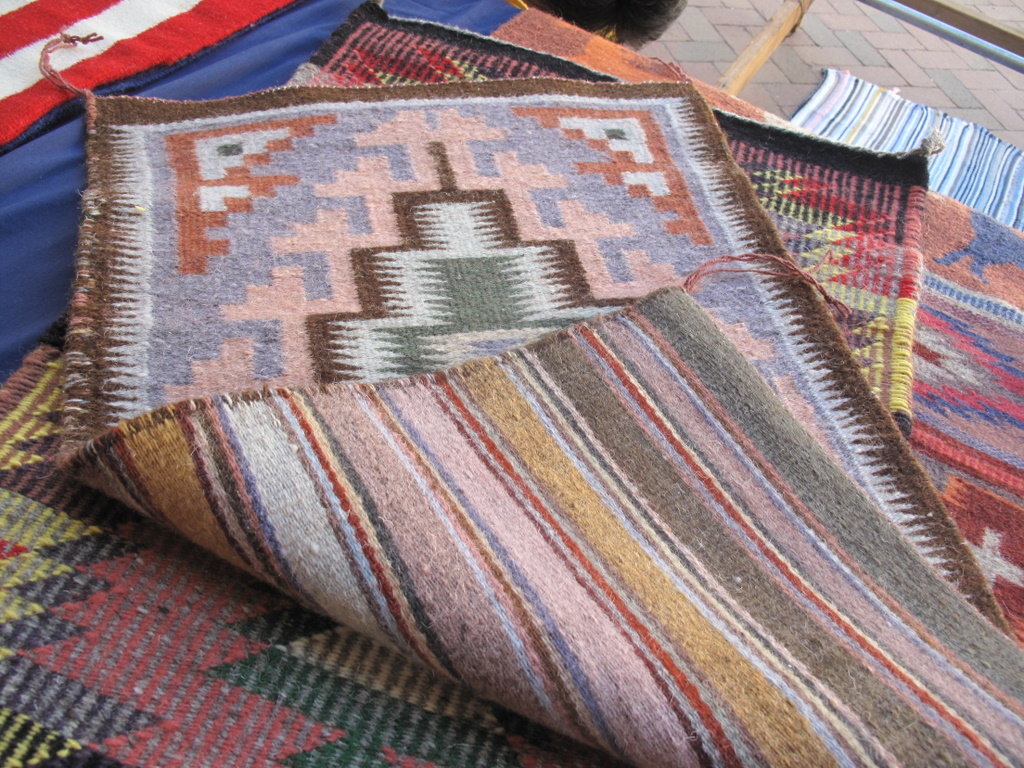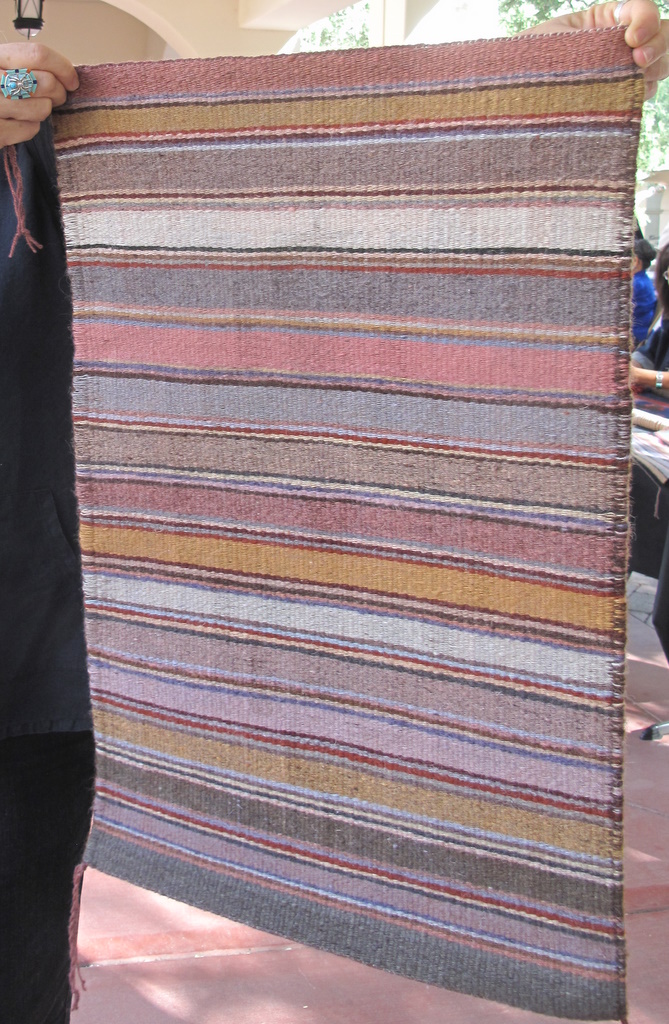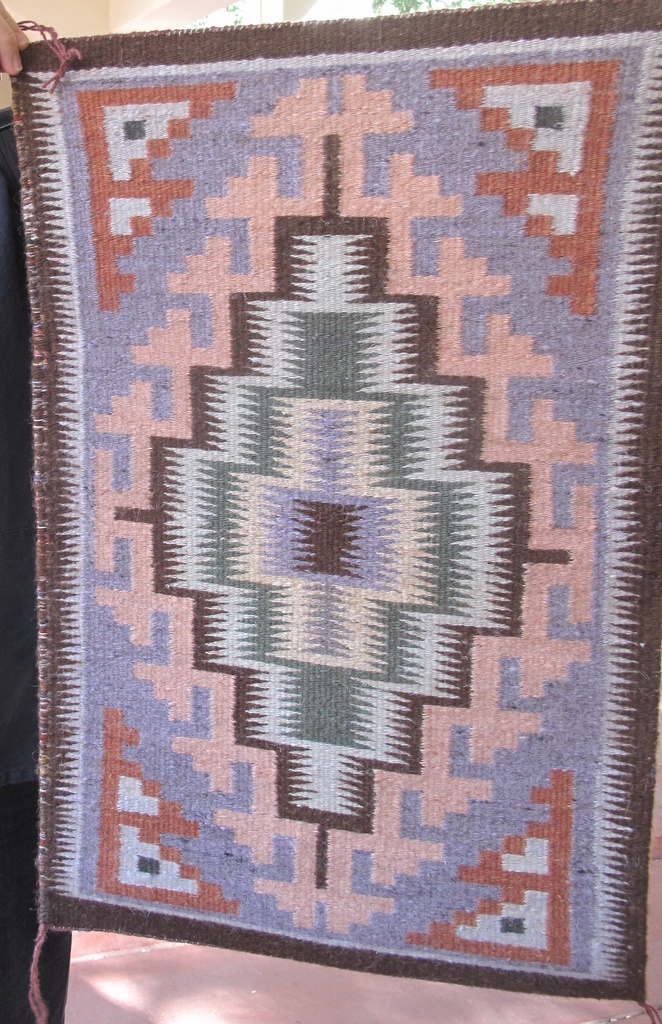Rug of the Day: Two-Sided Burntwater by Lola Cody

Nothing up her sleeves and her hands never left her wrists! Lola Cody set up her loom to do a double weave.
Tempe, AZ Lola Cody is noted for her weaving in general, but is particularly famous for her work with weft-faced double weave, which when combined with other Navajo techniques produces a weaving with two sides. In a conventional Navajo weaving, there are two paths or “sheds” for the weft threads to follow. A two-sided piece uses four sheds which have to be manipulated in the correct order to produce the two sided effect. There is a diagram of the tie-up in Designing with the Wool by Noel Bennett and Tiana Bighorse, and I warp my loom so that I have one less warp thread per side than I would normally use with the weft that I’ve chosen, but you could use any number of warps per side as long as it is at least one lower than you’d usually use. For instance, with Burnham’s #1 Trading Post Yarn, I’d warp my loom at 14 ends per inch, using 7 on each side. I found this number by trial and error and I like it because it minimizes the thickness of the double weave, but the wefts don’t peak through from the other side.
The weaving process is a simple progression in which the first shed and third sheds are manipulated to weave the side facing the weaver and the second shed and fourth sheds produce the side that is away from the weaver. While it is possible to do a pattern on both sides, it requires a lot of peeking around or a mirror and Lola opted for a stripe pattern on the other side. Some weavers combine the two sides tie up with a twill tie up to produce a weaving with twill borders and design panels. One of these days I’ll run across a picture of one of them.
Double sided rugs go back into the nineteenth century Transition period. One of the largest ever woven is the 18′ x 12′ (that’s right) Staples rug which is now in the collection of the Museum of Northern Arizona. You can read a scholarly paper on the rug by historian Bob Ring on his web site. Two-faced weaving is not very common today and Lola generally charges around $5000 to do one. I have seen some at the Crownpoint Rug Auction and R.B. Burnham and Co. Auctions in the $700 to $1100 price range.
Lola used vegetally dyed Burnham’s Trading Post Yarn in size 1 for this weaving, which was photographed November 6th, 2011 at the Heard Museum Gathering of Weavers in Phoenix, AZ using a Canon Powershot G10 camera. The Gathering is usually held on the first Saturday in November. You can click on either picture below for a close-up of both sides of the rug.
 |
 |
Hag0shíí (so long for now)
Mary Walker
